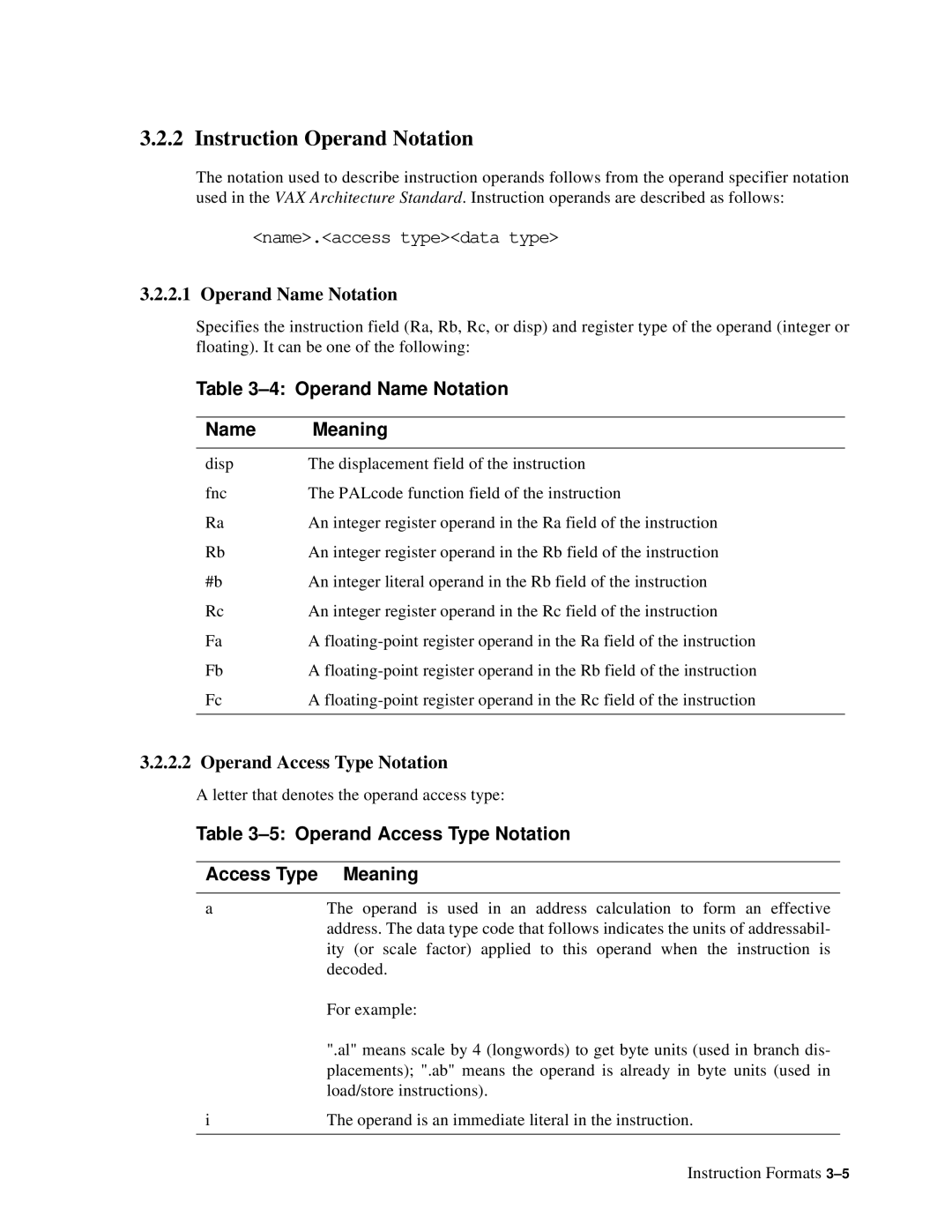
3.2.2 Instruction Operand Notation
The notation used to describe instruction operands follows from the operand specifier notation used in the VAX Architecture Standard. Instruction operands are described as follows:
<name>.<access type><data type>
3.2.2.1 Operand Name Notation
Specifies the instruction field (Ra, Rb, Rc, or disp) and register type of the operand (integer or floating). It can be one of the following:
Table 3–4: Operand Name Notation
Name | Meaning |
|
|
disp | The displacement field of the instruction |
fnc | The PALcode function field of the instruction |
Ra | An integer register operand in the Ra field of the instruction |
Rb | An integer register operand in the Rb field of the instruction |
#b | An integer literal operand in the Rb field of the instruction |
Rc | An integer register operand in the Rc field of the instruction |
Fa | A |
Fb | A |
Fc | A |
|
|
3.2.2.2 Operand Access Type Notation
A letter that denotes the operand access type:
Table 3–5: Operand Access Type Notation
Access Type | Meaning |
|
|
a | The operand is used in an address calculation to form an effective |
| address. The data type code that follows indicates the units of addressabil- |
| ity (or scale factor) applied to this operand when the instruction is |
| decoded. |
| For example: |
| ".al" means scale by 4 (longwords) to get byte units (used in branch dis- |
| placements); ".ab" means the operand is already in byte units (used in |
| load/store instructions). |
i | The operand is an immediate literal in the instruction. |
|
|
Instruction Formats
